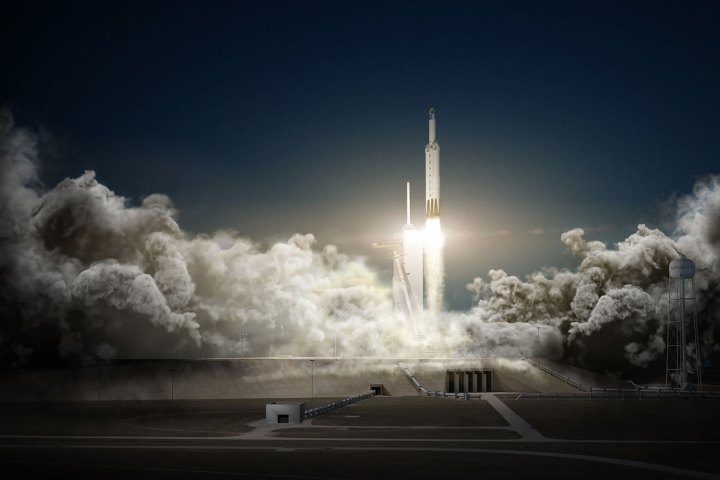
SpaceX announced Monday it’s sending two private citizens on a weeklong trip around the moon next year in the first voyage to the planet since NASA’s final Apollo mission in 1972.
The wealthy individuals recently approached SpaceX about the possibility of making such a journey, and, following discussions, have now paid a “significant” deposit to make it happen. Announcing the plan on Monday, SpaceX CEO Elon Musk refused to offer any details at this stage about the identity of the pair, saying only that they’re not Hollywood stars. However, it’s likely we’ll learn more about them following successful health and fitness tests.
Set to take place toward the end of 2018, the trip is designed to be fully autonomous, leaving the two space travelers to sit back and hopefully enjoy the extremely long flight.
“Like the Apollo astronauts before them, these individuals will travel into space carrying the hopes and dreams of all humankind, driven by the universal human spirit of exploration,” SpaceX said in a release.
Liftoff will be from the very same launch pad used by the Apollo program for its lunar missions: Pad 39A at the Kennedy Space Center near Cape Canaveral, Florida.
SpaceX said its Falcon Heavy rocket would be used to power the pair into orbit. Interestingly, this is a rocket that hasn’t even had its first test flight, something that’s due to take place this summer. If successful, it’ll be the most powerful vehicle to reach orbit after the Saturn V rocket, used by NASA between 1967 and 1973.
According to SpaceX, the Falcon Heavy has “two-thirds the thrust of Saturn V and more than double the thrust of the next largest launch vehicle currently flying.”
The two-person crew will travel to the moon in the Dragon V2 spacecraft, though this too is yet to be properly tested. Initial trials are due to take place later this year with a crewed test set for the second quarter of 2018, just a few months before the planned moon mission.
But if SpaceX’s recent launchpad calamity has taught us anything, it’s that plenty of testing still needs to take place before now and the proposed launch date. In other words, for the late-2018 schedule to remain in place, all of SpaceX’s trial runs will have to go without a hitch.
As for the mission itself, the two space travelers accept that things could go wrong. Speaking to reporters after the announcement, Musk said the astronaut wannabes were “entering this with their eyes open, knowing that there is some risk … They’re certainly not naive, and we’ll do everything we can to minimize that risk, but it’s not zero.” He added that the pair will undergo “extensive” training before the mission.
All things considered, it’s an ambitious timeline, and SpaceX will do well to stick to it. But the announcement indicates the company’s determination to aim high and press ahead with its grand long-term ambitions.
Indeed, SpaceX said its planned lunar mission will take it another step toward deep-space exploration, describing it as “an important milestone as we work toward our ultimate goal of transporting humans to Mars.”
Editors' Recommendations
- Check out SpaceX’s new spacesuit for first private spacewalk
- SpaceX Falcon 9 booster equals flight record, but does not land this time
- SpaceX slow-motion video shows powerful Raptor rocket engine shutting down
- Watch SpaceX blast its megarocket engines in spectacular test
- SpaceX shares stunning night shot of its Super Heavy booster


